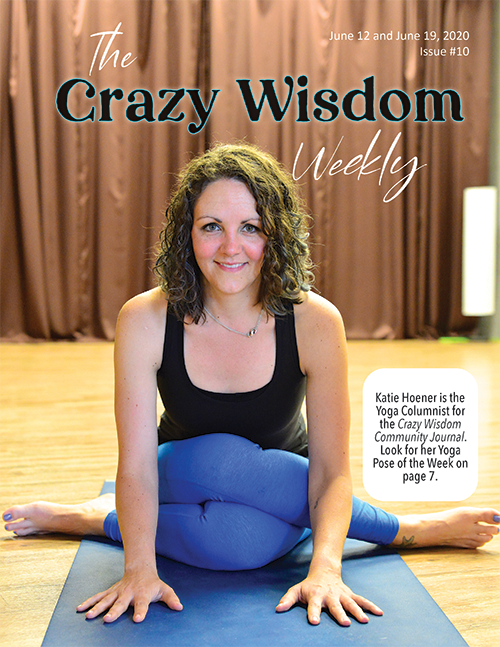By Suzanne Willets Brooks
Take a moment and close your eyes: imagine what your pelvic floor looks like. Visualize the muscles that make up the walls of the pelvic floor. Can you see what lies above and below it? What is the job description of the pelvic floor, and what does a healthy pelvic floor do? Most of us will have a problem with the above questions. We have only been told about how our pelvic floors are often dysfunctional leading to shame and mental and emotional trauma. How do you improve something you’ve never conceptualized? How do you create change when you do not even know what the functions of a healthy pelvic floor are supposed to be?
To build your pelvic power, it is vital to de-stigmatize the pelvis and its functions. No one feels uncomfortable talking about their arm, leg, or stomach muscles. There are dozens of classes and machines at the gym for building flexibility and strength in these areas—yet none for your pelvic floor. We could live without our arm muscles, but without a pelvic floor, we could not breathe, move our bodies, procreate, eliminate, absorb force, or even keep our organs internal! Sadly, scientists have named the nerve that gives feeling to the external genitalia, the skin around the anus, anal canal, and perineum the “Pudendal Nerve.” In Latin it means, “parts to be ashamed of.” Conversely, the triangular fusion of five bones ending in the coccyx—also known as the “Sacrum”—means sacred. We have the Egyptians to thank for that, as they considered the bone sacred to Osiris, the god of resurrection and agriculture.
As is the case for all animals with skeletons, the pelvis has undergone massive transformation. The human pelvis evolved because of bipedal locomotion. We went from mammals who walked on all fours to walking upright. The pelvic floor became a primary area for force absorption and movement. It was also now tasked with the job of being a hammock for our organs, previously the purview of the abdominals. The pelvis had to change shape to accommodate walking upright and childbirth. The pelvic floor is also a place for defecation and urination (elimination), but that has never changed. In a short amount of time, it became a place for movement, keeping things in, and letting things out. That is quite the job description!
How does the pelvis deal with all of these seemingly contradictory tasks? There are five joints, or places for movement in the pelvis. There are about 14 muscles in the pelvic floor, and they are arranged in three layers. There are three sphincters in women, two in men. There is a myriad of fascial connections to the pelvic floor, from the bottoms of your feet to your hands, and everything in-between. In a larger context, the pelvic floor is really the entire body. We tend to think of the body in a very divisive way: we isolate the systems, when in reality, the body is a connected network of nerves, fascia, bones, organs, tendon, ligaments, muscles, fluids, and cartilage. Pause and picture your entire body supporting your pelvic floor. Your pelvic floor is not alone!
We’ve all heard the phrase, “sitting is the new smoking!” I dare say, standing and holding still in one position are the new smoking as well. We are a culture that does not make movement a priority and one that mistakes tension as strength. The result is the pelvic floor and organs suffer. We are told our pelvic floors are weak and we are given sphincter exercises called “Kegels,” which can be helpful if done correctly, but most of us clench our pelvic floors and create tension. Too much tension makes our muscles weak. Muscles move bones. If our pelvic bones are not moving, we are not strengthening our pelvic floors. As stated before, the pelvic floor holds our organs like a hammock and needs to be buoyant. Thus, we need both concentric training (shortening contractions) like picking a baby up, and eccentric contractions (lengthening contraction) like putting a baby down. Research indicates that the eccentric phase makes us stronger. Breathing deeply using our diaphragm is great and easy pelvic floor exercise. We breathe about 20 thousand times a day, think how strong your pelvic floor could be if even 20% of those were deep, controlled breaths!
If you are interested in learning to train your pelvic floor, come to my Pelvic Power FM® workshop and learn:
Key exercises for a flexible and powerful pelvic floor
How to optimize the coordination of your muscle’s fascia and joints during pelvic floor training
How breathing can boost the effectiveness of pelvic floor training
How to integrate pelvic floor training with core strength
How training your pelvic floor can be effective at removing tension from your lower back and taking the pressure off of your knees
The Franklin Method®, created by Eric Franklin has been recognized and cited by the scientific community. It is an evidence-based approach to improving our overall function and movement and increasing our ability to see clearly how to improve its function. As Eric Franklins says, “better information, better navigation.” The first step to change starts in the mind. The brain is an anticipation machine that helps us to respond to what we want and need. Proprioception is key. Franklin said, “We cannot change what we cannot feel.” We get better at what we practice and what do we do most of the time (sitting, standing, walking, breathing, and thinking). Our daily habits are practiced 24 hours a day. Wouldn’t it be a good plan to do those habits well? Using DNI Dynamic Neurocognitive Imagery, we get the brain on board with creating change in our bodies and lives.
Suzanne Willets Brooks earned her BS in Dance and Education from Eastern Michigan University. She received certifications in massage therapy through the Green Mountain Institute and Body Wisdom School. She is a certified GYROTONIC®, GYROKENISIS®, Pilates educator, and a Level 4 Franklin Method® therapist. She teaches workshops and classes at both Ann Arbor’s Move Wellness and at Recentered Pilates and Movement Therapy. For more information about how The Franklin Method® can help you or to book a workshop, please contact Suzanne Willets Brooks at suzannebodywise@gmail.com.
Related Articles:




































































































































































































To build your pelvic power, it is vital to de-stigmatize the pelvis and its functions. No one feels uncomfortable talking about their arm, leg, or stomach muscles. There are dozens of classes and machines at the gym for building flexibility and strength in these areas—yet none for your pelvic floor.